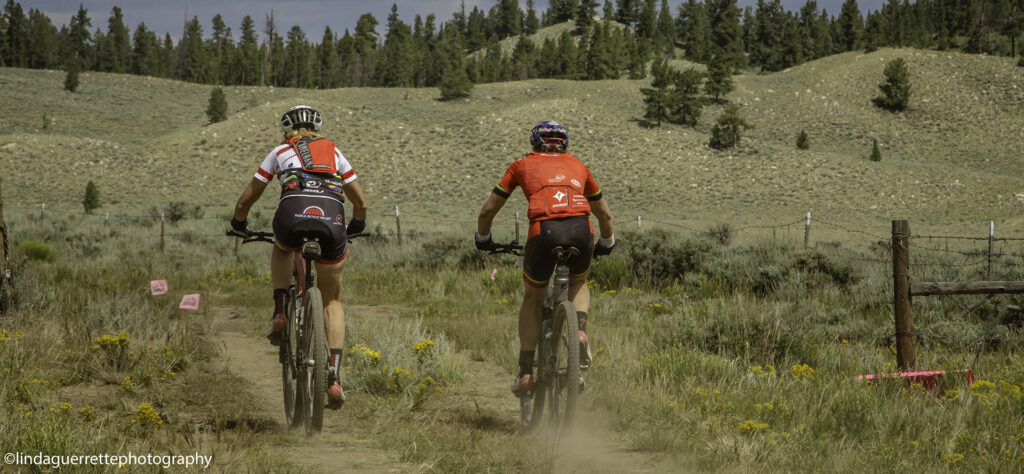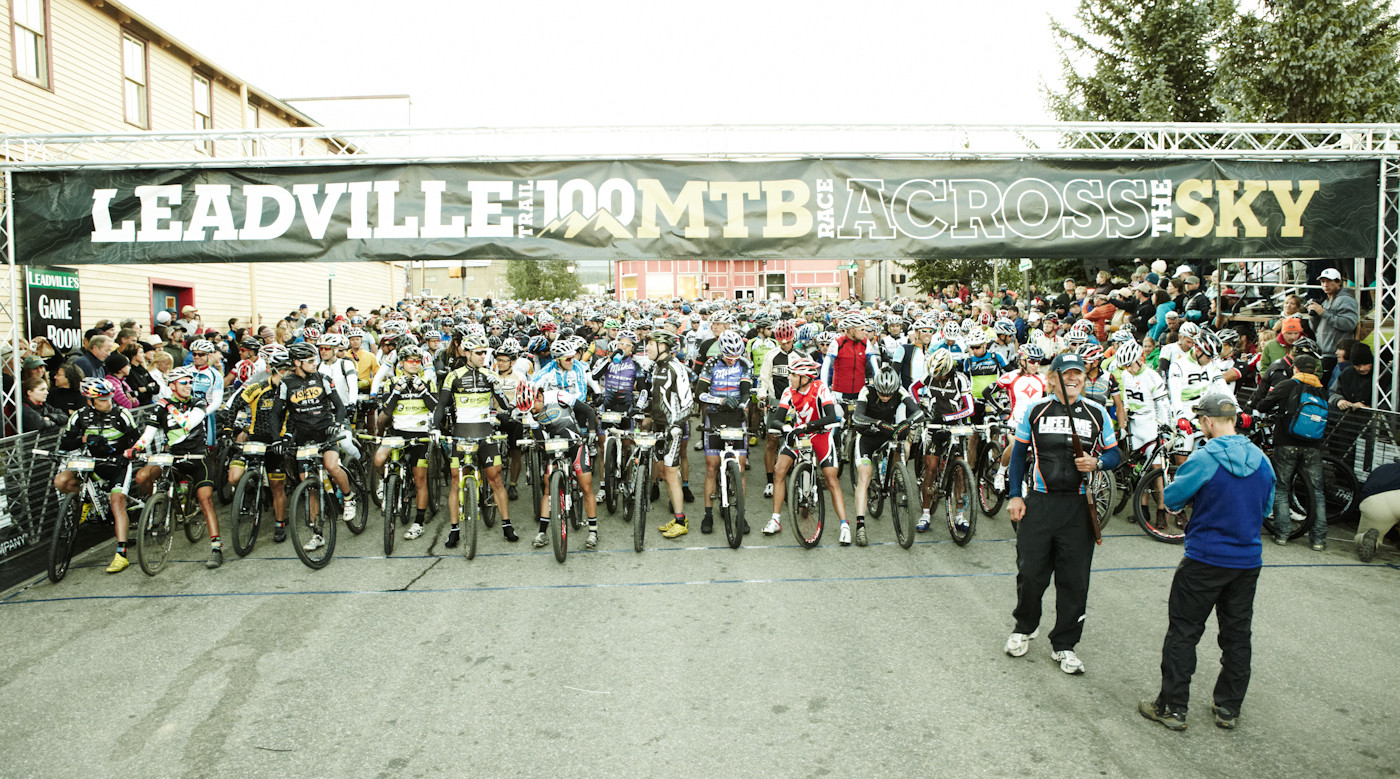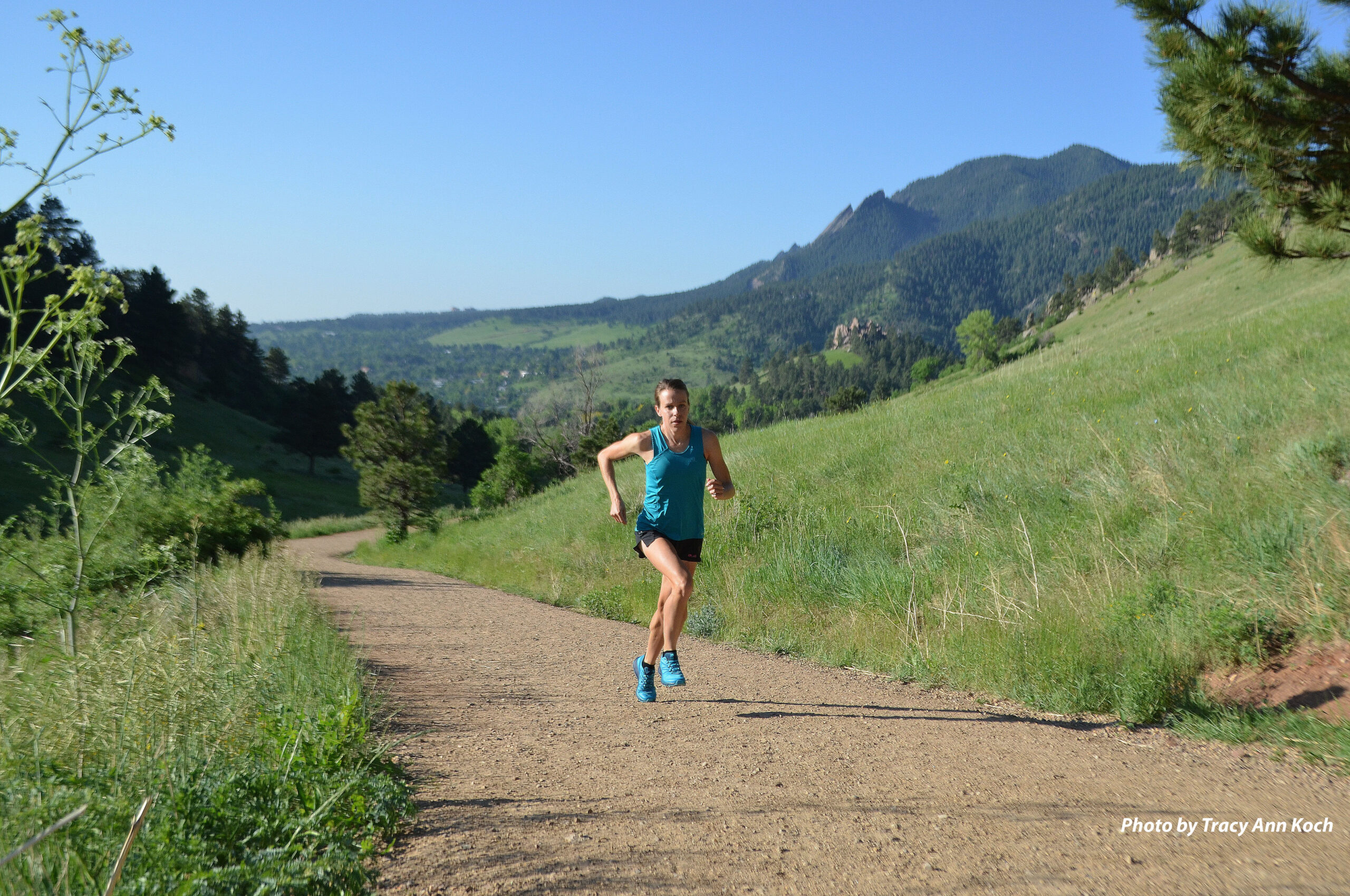Dispatches from Columbine — Double the Fun at Over 10,000 Feet

By Rebecca Rusch
Are you planning to ride the Leadville Trail 100 MTB or an other epic event with a friend, partner or spouse this year? You know what they say: Misery loves company and sometimes it’s just nicer to share an experience as special as Leadville with someone, well, special.
Riding together can deliver huge rewards, such as having a shoulder to cry on in those dark moments and ready hands to high five at the finish line. We are often stronger in pairs than we are alone, and can’t help but form a certain bond as we tag-team such a momentous, difficult and rewarding event.
Most of the time when someone opts to ride with a friend or spouse it involves a more experienced rider helping someone a little greener. Maybe you are ushering someone into the Leadville family and you want to enthusiastically share your experience and expertise with them. Perhaps you are rider who wants the security of a friend to help safely usher you to the red carpet in record time. The general setup is that of a teacher-student relationship. For friends and/or spouses, this can be a tricky dynamic as you hope to come out on the flip side with a stronger – not fractured – relationship.
I had the wonderful experience of riding with a friend last year in Leadville and helped push her to her first sub nine-hour finish. The experience was as rewarding for me as it was for her. Here are a few things to consider if you are riding in pairs.
- Understand that you are a team and agree to work as a singular unit before and during the ride. This includes training rides, preparation and execution. Team building begins well before the gun goes off. Get stoked and prepped together.
- Talk about your ultimate goal prior to the race. Are you in it to collect as many beautiful photos as you can along the way or to meet a certain time cut-off? The key to a great experience is being on exactly the same page. There are two people, but only one solitary goal. If this does not align for you and your partner, then consider ditching your plan to ride together and skip the rest of this article. If you are the more experienced rider, then be sure you whole-heartedly accept the role of mentor and realize that it’s only your partner’s goal that matters here. If you are in it to support them, then you cannot have your own agenda on race day. As they say “there is no I in TEAM.”
- Control the things you can as a team before the race starts. Bike equipment, nutrition and support crew can all be dialed in prior to the event and alleviate stress for both of you. Do this together as team bonding and a way to share the experience leading into the big day. This enables both riders to be part of the process and removes logistical stress.
- Find out what motivates your partner – as well as what really pisses them off. Before I rode with Lisa last year, I interviewed her about her eating habits, her riding strengths and weaknesses, her prior successful races and what works for her. I also looked for places where I knew I could offer support and help her improve. For us, this included faster aid stations, a little descending coaching and working harder on the flats. Her husband listened while we talked and kept his mouth shut. Smart man!
- Both partners need to communicate their expectations to the other. Lisa expected me to push her hard and trusted me to do so. All I expected of her was that she give 100 percent. I told her I did not care what time we finished, just as long as she gave it her all. I meant it and was totally okay with finishing in nine or 10 or 12 hours as long as she was doing her absolute best.
- Know when to push, pull or cry uncle. There is a fine balance between pushing someone to achieve what they never thought they could and pushing them beyond the breaking point. If you are the mentor, you are rotating between being a cheerleader, a Zen master, a psychologist, a mother and a cattle prod. All are essential strategies, but if you use them at the wrong time, they will backfire on you. This takes awareness, sensitivity and tough love. Reading your teammate in times of struggle and oxygen debt is one of the most challenging aspects of riding in pairs. Watch for subtle signs and become an expert at reading body language and the tone of certain grunts.
- Know when to speak up and shut up. Communication is key from both sides. Talking about how you are feeling, if you’re out of water, if you are cramping, how the pace is – those are essential items to make clear. Don’t expect your partner to read your mind and realize that small issues can become big if you wait too long to say something. On the flip side, no one wants to hear a husband and wife bicker and moan about how hard the ride is. Save your oxygen for the essential items and keep the peace in your relationship. The golden rule works well above 10,000 feet. “If you don’t have anything nice to say, don’t say anything at all.”
- Be support but not a crutch. It can be easy for a newer rider to rely heavily on the more experienced person for changing tires, making decisions or setting the pace. Don’t fall into those comfortable roles. There is nothing more amazing than empowering someone to take the lead. Allow your “student” to rise to the occasion and realize their own strength and power instead of doing all of the work for them. They will grow from the experience and you will have given them the gift of knowledge and independence.
- Most of all, be flexible, patient and persistent. When it gets tough – and we all know it will – never forget that the reason you wanted to ride together in the first place is because you like each other. Embrace the fantastic journey as a team and if you feel like you are going to cry, laugh instead.
See you on the red carpet,
Rebecca


